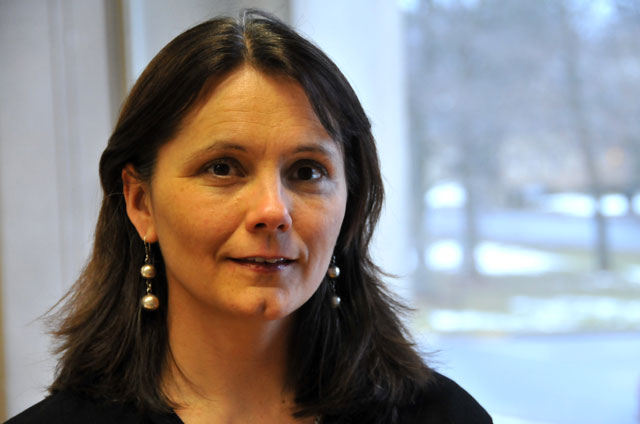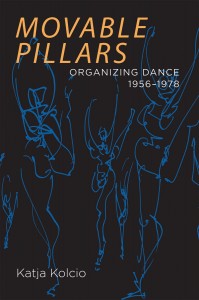5 Questions with … Katja Kolcio

This issue, we ask 5 Questions to . . . Katja Kolcio, associate professor of dance, and author of the new Wesleyan University Press book Movable Pillars Organizing Dance, 1956–1978.
Q: How did you become involved with the “Branching Out, Oral Histories of the Founders of Six National Dance Organizations” assignment, which led to your book?
A: In 2001, I was invited by the American Dance Guild to conduct interviews with founders of six major American dance organizations. Marilynn Danitz and Margot Lehman, past presidents of the Guild, conceived of the project. These organizations were founded in the ’50s and ’60s, and have had an important impact on dance in the United States since then. Many of their founders were getting older and had not been properly recognized for their tremendous contributions. This was an effort to talk with some of those pioneers and to document their recollections.
Q: Why did you focus on the founders and history of six particular organizations?
A: These organizations (the Congress on Research in Dance, the American Dance Therapy Association, the American College Dance Festival Association, the Dance Critics Association, and the Society of Dance History Scholars and the American Dance Guild) are all somewhat affiliated with one another, in one way or another. Many of the founders knew one another because most were on the East Coast or in New York City. The 20-year period within which they emerged marks a significant proliferation of organization, communication and activism in the dance community in the United States. The American Dance Guild wanted to explore the history of these groups because the Guild was an important progenitor in helping those organizations get started.
A: In the book, I focus on the role these organizations played in serving as a platform for dance as an intellectual discipline within academia. Certainly these organizations have done a lot of other things, but that’s what I focus on. And now, we have Ph.D programs in dance, which weren’t around in the 1950s and 60s, though I don’t think this was the founders’ goal.

Q: I understand this is the first book to focus on the founding of these professional organizations. Why were these organizations so important?
These organizations helped create the venues, including scholarly journals, conferences, and publications, for the field to define itself and articulate its methods of inquiry. By doing so they were instrumental in developing dance as an academic discipline, and legitimizing creative physical inquiry on academic campuses.
Q: Can you tell us an interesting story from your book that should not be kept hidden?
A: One story was that, in order to advocate funding for a particular grant, members of the American Dance Therapy Session led a movement session in Congress in 1992. They ended up getting the grant. If that is available on video, that would be priceless.
Q: What was the most gratifying part of writing Movable Pillars?
A: What struck me was the very humble and practical attitude of these individuals who helped to found the dance organizations, plan conferences and publish journals. Dance studies tend to focus on our choreographers and performers. But these pioneers influenced our field profoundly and, I hope, will be recognized for the impact of their work. It was an honor to get to know these individuals and name them as significant.

